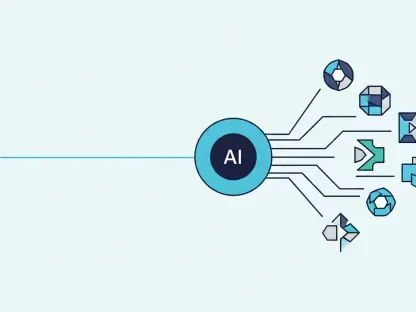The rapid advancement of artificial intelligence (AI) has undoubtedly transformed many aspects of modern life. However, recent studies, particularly from The University of Texas at San Antonio (UTSA), have revealed alarming vulnerabilities in how AI systems process image transparency. These flaws raise critical questions about the reliability and safety of AI in real-world applications. The UTSA study highlights a significant oversight in AI systems related to the alpha channel, which controls image transparency. This gap presents a major security vulnerability, making AI systems susceptible to manipulation that could result in discrepancies between human and machine perceptions of the same image.
The Overlooked Alpha Channel in AI
One fundamental issue identified by UTSA researchers is the AI’s oversight of the alpha channel in image processing. While most AI systems focus on RGB (red, green, blue) channels for image recognition, the alpha channel, responsible for controlling pixel transparency, is largely ignored. This gap presents a significant security vulnerability. AI systems failing to account for the alpha channel can result in discrepancies between human and machine perceptions of the same image. By manipulating transparency, attackers can subtly alter images, leading to potential misinterpretations by AI algorithms. This flaw could have far-reaching implications, not only compromising the integrity of visual data but also exposing various sectors to heightened risks.
Researchers at UTSA have demonstrated that the alpha channel’s oversight can be manipulated to create perceptual discrepancies between human and machine interpretations of visual data. These discrepancies can have dangerous real-world implications. For instance, altered images can deceive AI systems into making incorrect decisions, thereby compromising safety and security. This vulnerability is particularly concerning given the increasing reliance on AI systems in critical applications such as autonomous vehicles, medical imaging, and facial recognition. Addressing the alpha channel oversight is crucial to ensuring the reliability and security of AI technologies.
Introducing the AlphaDog Attack Method
To demonstrate the severity of alpha channel vulnerabilities, UTSA researchers developed a proprietary method named AlphaDog. This attack method exploits the AI’s oversight by manipulating image transparency to deceive the system’s perception. The AlphaDog approach effectively highlights how even minute changes in transparency can create significant inconsistencies in AI image recognition. AlphaDog’s manipulative potential extends across numerous AI models and systems. It exposes how existing AI algorithms, largely designed with a focus on color channels, fail when transparency manipulation is introduced.
The development of AlphaDog underscores the urgent need for systemic improvements in AI security. The method showcases how easily existing AI systems can be deceived through transparency manipulation. This vulnerability is particularly alarming given the rapid adoption of AI technologies in various sectors. As AI systems continue to evolve and integrate into everyday operations, addressing these transparency flaws is essential to safeguarding against potential manipulations. The AlphaDog method serves as a wake-up call for the industry to prioritize the development of more robust AI models that account for all aspects of image processing, including the alpha channel.
Real-World Risks in Autonomous Vehicles
Perhaps one of the most concerning implications of AlphaDog is its effect on autonomous vehicles. Modern self-driving cars rely extensively on AI to interpret road signs and signals. If hackers manipulate grayscale components of road signs using the AlphaDog method, AI systems could misread these signs, leading to dangerous driving decisions. This form of attack underscores a critical vulnerability in the safety of autonomous vehicle passengers and pedestrians. Misinterpreted road signs could result in traffic violations or even severe accidents. The research highlights the pressing need for more robust safeguards within AI systems to prevent such life-threatening manipulations.
The potential risks extend beyond just misinterpreted road signs. Manipulations using the AlphaDog method could disrupt the entire autonomous driving system, leading to significant safety concerns. Autonomous vehicles rely heavily on accurate image recognition for safe and efficient operation. Any manipulation of visual data can have catastrophic consequences, emphasizing the need for enhanced AI security measures. The study’s findings call for immediate attention to developing more comprehensive AI models capable of detecting and mitigating such transparency manipulations. Ensuring the safety and reliability of autonomous vehicles is paramount as they become more prevalent on the roads.
Medical Imaging Vulnerabilities
Another area of significant concern is the application of AlphaDog in medical imaging. Grayscale images such as X-rays and MRIs are vital diagnostic tools in healthcare. By exploiting the alpha channel, attackers could alter these medical images, leading to incorrect diagnoses and treatment plans, thereby jeopardizing patient health. Moreover, the potential for fraud in the healthcare and insurance industries adds another layer of risk. Malicious actors could manipulate medical images to create fraudulent claims or exploit insurance systems, causing financial damage and undermining trust in medical AI technologies. Addressing these vulnerabilities is crucial to maintaining the integrity and reliability of medical diagnostics and healthcare services.
The implications of alpha channel manipulation in medical imaging are profound. Altered medical images not only jeopardize patient health but also undermine the credibility of AI-driven diagnostic tools. Ensuring the accuracy and integrity of medical imaging is essential to delivering effective healthcare. The findings of the UTSA study emphasize the need for robust security measures in AI systems used in healthcare. Developing AI models that can detect and mitigate transparency manipulations is crucial to safeguarding patient health and maintaining trust in medical technologies. The urgency of addressing these vulnerabilities cannot be overstated, given the potential life-threatening consequences.
Challenges in Facial Recognition Systems
Facial recognition systems, widely used for security and identification purposes, are also at risk due to alpha channel exploitation. These systems predominantly analyze RGB channels to identify and verify individuals. However, by manipulating the transparency of facial features using AlphaDog, attackers can deceive facial recognition algorithms. Such manipulations could allow unauthorized access or facilitate identity theft, posing significant security threats in both private and public sectors. The research suggests a need for enhanced AI training and algorithms that account for transparency variances, ensuring that facial recognition systems can reliably distinguish genuine images from manipulated ones.
The vulnerability of facial recognition systems to transparency manipulation is particularly concerning, given their widespread use in security and identification applications. Manipulated facial images can undermine the effectiveness of these systems, resulting in significant security breaches. The study highlights the importance of developing AI models that can accurately detect and mitigate transparency manipulations. Ensuring the reliability of facial recognition systems is crucial to maintaining security and preventing unauthorized access. The findings of the UTSA study call for immediate attention to enhancing the robustness of AI algorithms used in facial recognition to safeguard against potential manipulations.
Industry Collaboration for Enhanced Security
The rapid advancement of artificial intelligence (AI) has undeniably revolutionized many facets of modern life. However, recent research, particularly from The University of Texas at San Antonio (UTSA), has uncovered concerning vulnerabilities in how AI systems handle image transparency. These weaknesses raise critical questions about the dependability and safety of AI in practical applications. The UTSA study points out a notable flaw in AI systems associated with the alpha channel, which manages image transparency. This oversight presents a significant security vulnerability, making AI systems prone to manipulation. Such manipulation can cause discrepancies between human and machine interpretations of the same image, leading to potential misuse or misidentification in critical scenarios.
The implications of these vulnerabilities are extensive, ranging from issues in autonomous vehicles to potential exploitation in security systems. The UTSA’s findings emphasize the need for more rigorous testing and development of AI frameworks to ensure they can process image transparency accurately and securely. As AI continues to integrate more deeply into our daily lives, addressing these gaps is crucial for maintaining trust and safety in AI-driven technologies.









